Antibiotics and bacterial resistance in the 21st century
- PMID: 25232278
- PMCID: PMC4159373
- DOI: 10.4137/PMC.S14459
Antibiotics and bacterial resistance in the 21st century
Abstract
Dangerous, antibiotic resistant bacteria have been observed with increasing frequency over the past several decades. In this review the factors that have been linked to this phenomenon are addressed. Profiles of bacterial species that are deemed to be particularly concerning at the present time are illustrated. Factors including economic impact, intrinsic and acquired drug resistance, morbidity and mortality rates, and means of infection are taken into account. Synchronously with the waxing of bacterial resistance there has been waning antibiotic development. The approaches that scientists are employing in the pursuit of new antibacterial agents are briefly described. The standings of established antibiotic classes as well as potentially emerging classes are assessed with an emphasis on molecules that have been clinically approved or are in advanced stages of development. Historical perspectives, mechanisms of action and resistance, spectrum of activity, and preeminent members of each class are discussed.
Keywords: antibiotic resistance mechanisms; antibiotics; drug-resistant bacteria; novel antibiotic targets.
Figures










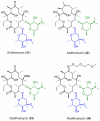

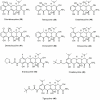
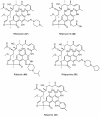
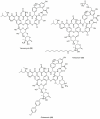






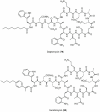




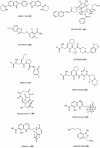
References
-
- Appelbaum PC. 2012 and Beyond: Potential for the Start of a Second Pre-antibiotic Era? J Antimicrob Chemother. 2012;67(9):2062–8. - PubMed
-
- Center for Disease Control and Prevention Achievements in Public Health 1900–1999: Control of Infectious Diseases. [Accessed December 20, 2013]. Available at: http://www.cdc.gov/mmwr/preview/mmwrhtml/mm4829a1.htm.
-
- Center for Disease Control and Prevention World Health Day: Media Fact Sheet. [Accessed December 20, 2013]. Available at: http://www.cdc.gov/media/releases/2011/f0407_antimicro-bialresistance.pdf.
-
- Center for Disease Control and Prevention Antibiotic Resistance Threats in the United States. 2013. [Accessed March 19, 2014]. Available at: http://www.cdc.gov/drugresistance/threat-report-2013/pdf/ar-threats-2013....
-
- European Medicine Agency The bacterial challenge: time to react. A call to narrow the gap between multidrug-resistant bacteria in the EU and the development of new antibacterial agents. [Accessed: December 20, 2013]. Available at: http://www.ema.europa.eu/docs/en_GB/document_library/Report/2009/11/WC50....
Publication types
Grants and funding
LinkOut - more resources
Full Text Sources
Other Literature Sources
Miscellaneous

